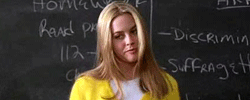Reviews
Nicole Holofcener
USA , 1996
Credits
Review by Matt Bailey
Posted on 03 July 2006
Source Miramax DVD
Categories Chick Flicks
Was it only ten years ago that we were at the zenith of the golden age of indie filmmaking? Clerks, Spanking the Monkey, and Pulp Fiction were all released in 1994, clearing a path for dozens of low-budget features to follow. Within the next couple of years, audiences saw the independently-produced first features from such now-familiar names as James Mangold, Larry Clark, Lodge Kerrigan, Edward Burns, Rebecca Miller, Alexander Payne, Todd Solondz, Mary Harron, Terry Zwigoff, and Neil LaBute; the Sundance Film Festival grew seemingly overnight from a cozy little gathering in the mountains into the premier American film market; and Miramax, enjoying the deep pockets of their new owner, Disney, picked up film after film for distribution (even if they never quite got around to releasing all of them), becoming a trusted brand among art house movie lovers.
In the summer of 1996, on the same weekend they released the massively hyped Trainspotting, Miramax quietly opened a small indie film called Walking and Talking. Made for under a million dollars—a low figure even during that era of boasting about small budgets—the film was directed by a first-time female director and featured an ensemble of actors with—at best—a few other independent credits to their names. Perhaps Miramax thought they were engaging in a clever bit of counter-programming— and it’s easy to second guess marketing and distribution tactics a decade after the fact—but is it any surprise that Trainspotting went on to make nearly sixteen times the box office of Walking and Talking? Is it any surprise that the next film by Trainspotting’s creative team—the execrable A Life Less Ordinary—was released amid a bustle of publicity just over one year later while Walking and Talking’s director, Nicole Holofcener, spent half a decade directing episodes of Sex and the City while waiting to make her second feature (reportedly made for a quarter of her debut’s budget)? Is it any surprise that Holofcener’s third film, Friends With Money—still in theaters as of this writing—has yet to reach the box office take of Trainspotting? After all, she makes a strange, unsellable hybrid of film: the indie Gen X chick flick dramedy.
Nicole Holofcener, a refugee from the male-dominated trenches of film school and indie filmmaking, does not make movies about small-time gangsters or funny drug addicts or psychotic killers. She makes movies about women who are realer than real. She makes movies about intelligent yet insecure women who are related to or in friendships with other intelligent yet insecure women, and these women spend the movie talking about their relationships and friendships, often questioning why they are even in said relationships or friendships. Moreover, these women’s talking and questioning often results in no significant change in those relationships or friendships at the end of the movie. To put it bluntly, Holofcener makes movies that no “guy” would ever want to see or would ever admit to seeing if he had. In fact, Holofcener offers few concessions to “guys”. Her male characters are often sketches of men, impossible to identify with, and, though she often hires beautiful female actresses (Jennifer Aniston, Emily Mortimer, and Holofcener’s “Old Reliable”—Catherine Keener), she does not pander to a male audience by inappropriately sexualizing them. Furthermore, she often subverts the expectation that women always be pretty and appealing, with loveable flaws and cute neuroses. Emily Mortimer’s nude scene in Holofcener’s second film, Lovely & Amazing, is the most difficult-to-watch scene in the film because she demands that her boyfriend criticize without tact every flaw on her naked body. You’re happy to see her clothed again.
If any of Holofcener’s films were to appeal to a male audience (or at least provide the fewest squirm-inducing moments to it), it would be Walking and Talking. Where Lovely & Amazing and Friends With Money seem to want to explore female relationships through the lenses of body image and class, respectively, and to do so with increasing cynicism, Walking and Talking seems content to explore the small sacrifices men and women make in order to have harmonious friendships with each other and the ways in which people must continually accommodate and compromise in order to maintain their friendships. Though the primary relationship in the film is between two lifelong female friends, their friendship is colored and changed by the women’s relationships with former, current, and even potential boyfriends. The male characters in this film (played by indie stalwarts Todd Field, Liev Schreiber, Kevin Corrigan, and Randall Batinkoff) are more clearly defined than in Holofcener’s later films and even get some of the good lines: “Do we really have to listen to this vagina music all the way there?” is perhaps the most memorable line in the film (at least tying with Keener’s “This sponge smells like a hot dog and I can’t stop smelling it” bit) and it’s delivered by a man. But even if interpersonal relationships ought to be of interest to men as well as women, in cinema they are almost entirely the domain of the chick flick. And, for better or worse, despite its indie credentials (shot by Hal Hartley’s cinematographer, produced by James Schamus and Ted Hope) and the universal appeal of its witty screenplay, that’s the domain of Holofcener’s film.
More Chick Flicks
-

The Truth About Cats & Dogs
1996 -

Say Anything
1989 -

Gas Food Lodging
1992 -

Pretty Woman
1990 -

Walking and Talking
1996 -

Mean Girls
2004 -

Fried Green Tomatoes
1991 -

Private Benjamin
1980 -

Clueless
1995 -

Erin Brockovich
2000 -

The Bridges of Madison County
1995 -

Bridget Jones’s Diary
2001 -

Working Girl
1988 -

Bend It Like Beckham
2002 -

Bring It On
2000 -

Ghost
1990 -

Truly Madly Deeply
1991 -

The Last of the Mohicans
1992
We don’t do comments anymore, but you may contact us here or find us on Twitter or Facebook.



